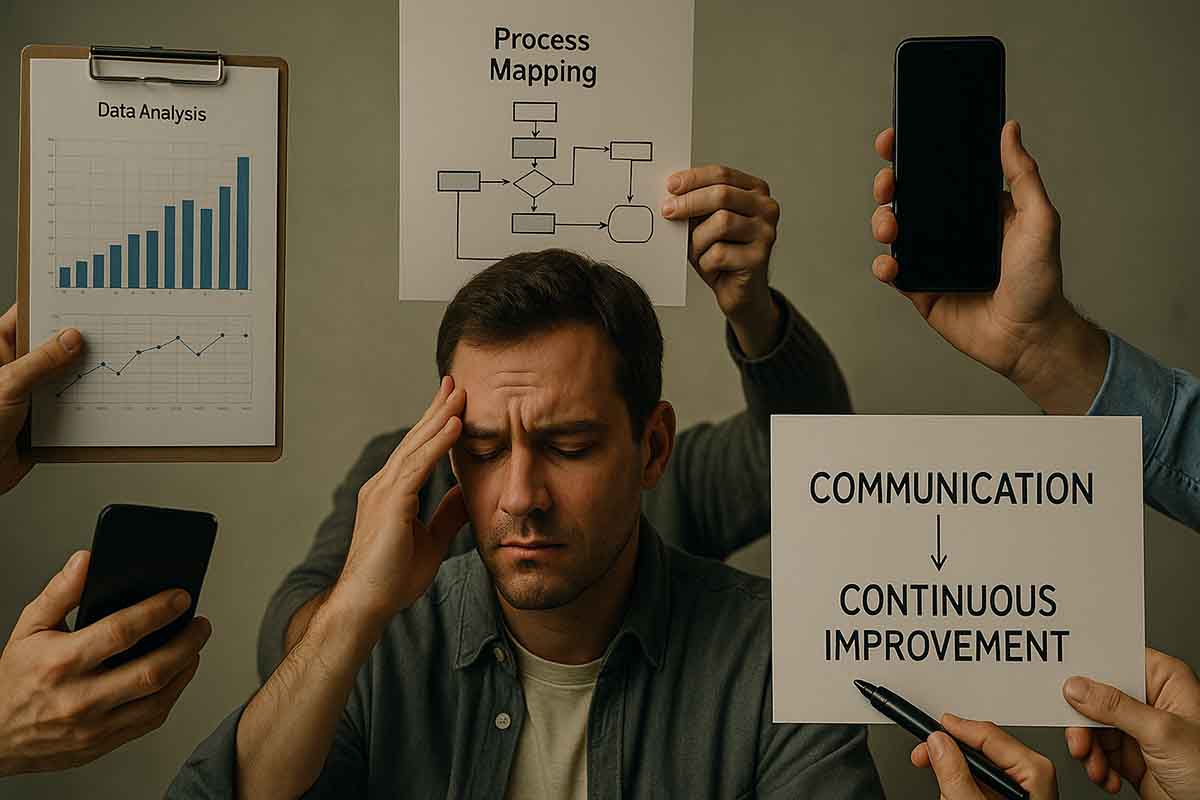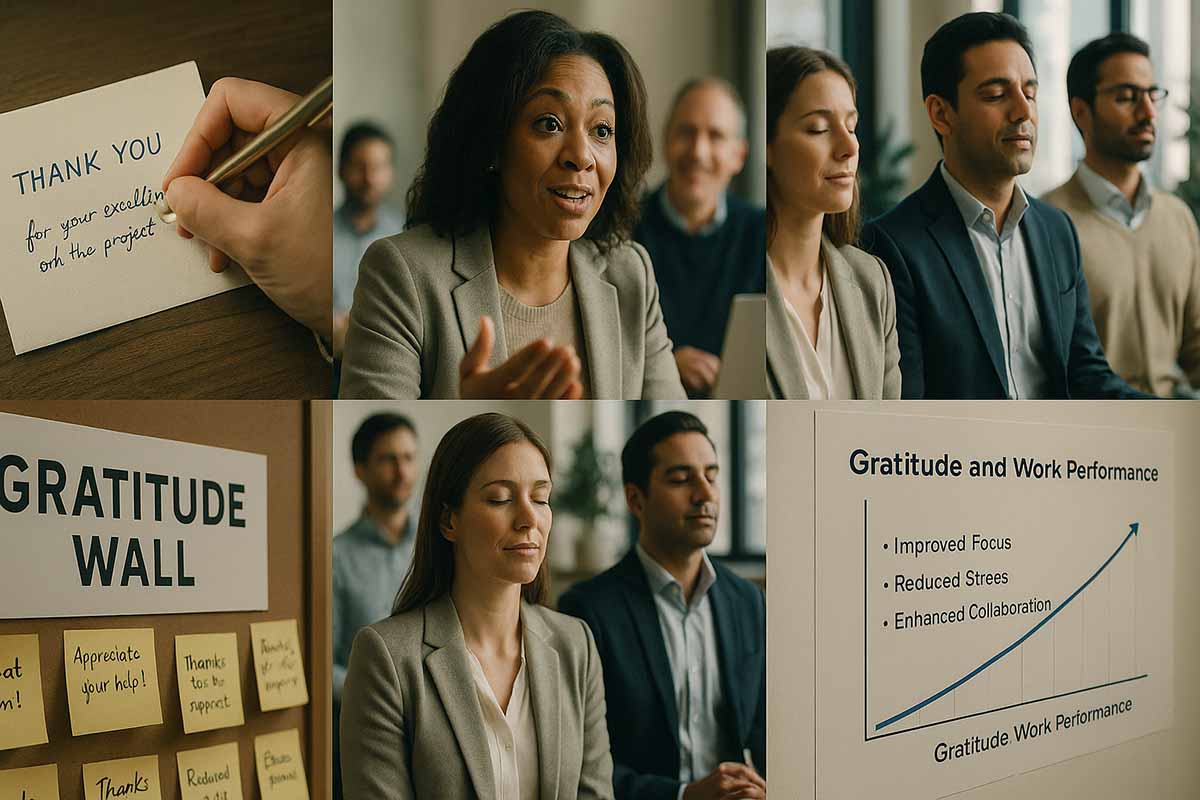Spotting Workflow Bottlenecks at Work
Early Detection of Workflow Bottlenecks at Work
Not every day flows the same for global teams. Some days feel like a smooth orchestra, while others stall from unseen blocks. These process bottlenecks often cause delays, additional costs, and team fatigue. Spotting these early helps protect time, quality, and motivation across the group.
- A bottleneck is any step, person, or system that slows down or reduces the quality of overall workflow.
- They’re easiest to detect through signs like long queues, frequent waiting, repeated rework, and rising cycle time.
- Track metrics like lead time, WIP, throughput, and flow efficiency to measure workflow health.
- Fix them by mapping the process clearly, running small experiments, improving handoffs, and setting practical task limits.
For teams analyzing capacity constraints, the free bottleneck calculator pc is a helpful tool. It estimates if delays are hardware-related, especially for those juggling creative, marketing, or dev-heavy tasks on limited machines.
What Bottlenecks Are and Why They Matter
A bottleneck is the narrow part of a workflow that slows everything down. It’s rarely one person’s fault. Often, it’s a mix of unclear roles, overloaded systems, or outdated rules. When work gets stuck at one step, everything after it suffers. Costs go up, deadlines slip, and frustrations build.
Consider a marketing team spread across three continents. Every campaign requires legal approval before launch. If only one person can sign off and they’re often in meetings, a queue forms. Each day of delay might mean thousands in missed value.
Signs of Bottlenecks
The first sign is growing queues. If support tickets pile up for days, something’s stuck. Another clue: tasks marked “In Progress” that don’t move forward. Repeated rework often means poor handoffs or missing details upfront.
Approval steps can also show bottlenecks. If waiting takes longer than doing, something needs review. In remote teams, reliance on someone in a different time zone can freeze progress. If critical knowledge is held by just one person, they become a bottleneck intentionally or not.
Key Metrics to Watch
Lead time. The total time from start to finish. If this rises while workload stays constant, a bottleneck may be developing.
Cycle time. The actual time spent working on a task. If it’s short but lead time is long, waiting is the problem.
Work in Progress (WIP). Too many concurrent tasks slow the system, like rush hour traffic. When WIP exceeds capacity, expect slowdowns.
Throughput. The number of items completed in a given time. If output stays flat while team size grows, something’s off in task distribution or handoff clarity.
Flow efficiency. This shows how much time is spent actually working versus waiting. Low efficiency means delays dominate the process. Improving it without adding people often fixes the bottleneck.
In one software team, code merges took two hours, but production deployment took five days. Short cycle, long lead time. The delay was in the pipeline, not in coding.
Common Causes of Bottlenecks
Incomplete handoffs. When the next person lacks info, work halts. A checklist can prevent this.
Centralized approvals. One busy person approving everything? That’s a delay trap. Better to define which items need review and empower others where it’s safe.
Tool fragmentation. Switching between multiple apps eats time and causes errors. It stretches the cycle and kills momentum.
Constant priority changes. If tasks are often paused for urgent new ones, WIP balloons and lead time grows. Teams need a clear lane for actual urgent work.
Mental fatigue and context switching. Jumping between chats, meetings, and tasks drains people. Even brief distractions compound delays across a week.
Time zone dependencies. If key configs or datasets are only accessible during one admin’s hours, workflow stops. Fixing permissions and improving documentation can save days of waiting each week.
How to Detect Bottlenecks: Map, Measure, Talk, Observe
Create a simple process map. List major steps from start to finish. Note processing and wait times. Keep it basic. Many teams use value stream mapping to find delays hiding in plain sight.
Measure reality, not guesses. Use data from ticket systems, version control, or calendars. Track start dates, status shifts, and completions. If data is missing, fix that first without reliable data, measurements mean little.
Talk to the people doing the work. Ask where they often pause. What info do they lack during handoffs? Listen to rework stories. Frontliners often spot issues first.
Watch real work unfold. If possible, observe a typical day. See where work flows and stalls. Sometimes it’s as simple as a shared inbox no one checks closely.
Examples from Different Industries
Software development. A global team coded fast but released slowly. Four people had to review every change. Two were often unavailable. They switched to two reviewers for low-risk changes and used a checklist for complex ones. Output improved without quality loss.
Marketing. Campaign work stalled at the creative brief. Too many missing details. The team created a standard template with target audience, goals, timeline, and references. Rework dropped, content shipped earlier.
Logistics. A warehouse kept getting stuck at packing. Picking was fine, but quality checks caused queues. Adding a mid-shift QC window spread the load.
Customer support. Weekend ticket resolutions dropped. Only one admin had rights to resolve certain issues. They expanded permissions and wrote a guide. More agents could now resolve tickets even during weekends.
Finding the Right Task Size
Sometimes, bottlenecks stem from task size. Large tasks mean more waiting and risk. Tiny tasks cause handoff overhead. Aim for chunks that finish in a few days enough time for flow, but not too long to delay feedback.
A content team, for instance, could split a campaign into: brief, headline options, body copy, and layout. Each has a clear end point and standard.
Using WIP Limits Effectively
WIP limits define how many tasks can be worked on simultaneously. Once the cap is reached, finish something before starting new work. It’s not a punishment, it protects focus and quality.
Too many open tasks stretch attention, raise lead time, and increase errors. On a Kanban board, the fullest column often reveals the bottleneck. Start with a conservative limit. Monitor impact and adjust based on real results.
Fixing Handoffs with Clear Standards
Before a step begins, ensure all requirements are ready. For example, before assigning design work, confirm the audience, message, format, and deadline. Clear standards reduce mid-task questions. Approval moves faster when everything’s in place.
Also, set specific response times for approvers. Where signatures aren’t needed, give authority to teams within defined risk boundaries.
Small Experiments, Real Relief
You don’t need sweeping changes. Pick one high-wait area. Try a two-week experiment. Move a decision closer to the task owner, within limits. Or block off meeting-free time for deep work.
Measure before and after. If throughput or lead time improves, keep it. If not, revise or drop it. The discipline of small tests prevents wasted effort.
Combine Data with Stories
Numbers alone don’t explain everything. A tool may lower efficiency simply because it’s hard to use. High WIP might stem from repeated last-minute sales requests without enough brief info.
Balance the metrics with real experiences. This mix reveals root causes faster.
Designing for Time Zones
In distributed teams, time design matters. Create overlapping hours for key conversations. Shift tasks that don’t require real-time action to async formats. Use templates for updates and handoffs.
This shifts bottlenecks from people to processes. Clear standards for what needs a live call and what can go in a thread reduce waiting and stress.
Clear Ownership Prevents Stalls
Without ownership, nothing moves. Assign a responsible person for every step plus a backup. Make an ownership matrix visible. Tie it to risk levels.
Low-risk tasks need a primary and a backup. High-risk ones require two reviewers with response deadlines. Clarity keeps tickets from stalling.
Reduce Rework with Shared Definitions of Done
Many bottlenecks come from unclear task completion. Create a single definition of done per task type.
For example, a landing page should have approved copy, tested links, responsive layout, and archived assets. When standards are shared, surprises fade and queues shrink.
Protecting Focus Amid Meetings
Back-to-back meetings kill momentum. Block out daily focus time and no meetings allowed. Use routines for updates and standups. Post updates in a single thread with searchable structure.
Dedicated work hours improve cycle time and output.
Workflow Tune-Up Checklist (No Bullet Needed)
Step 1: Compare lead and cycle time over the past two weeks against the previous month.
Step 2: Identify the board column that fills up fastest. Find out why.
Step 3: Review handoff templates. Ensure they answer key questions before moving.
Step 4: Apply WIP limits to the most congested stage for two weeks.
Step 5: Document response times for each approver.
Step 6: Create one overlapping hour for time-zone-spread teams.
Step 7: Choose one test change. Measure before and after.
Step 8: Celebrate small wins. Share results to spread learning.
How to Tell if It’s Working
Shorter lead times. Balanced task distribution. Fewer rework tickets. Faster approvals. Smoother transitions across time zones. In one quarter, expect steadier throughput and fewer rush jobs.
It doesn’t take a big budget to achieve this, just good data, honest conversations, and consistent experimentation.
Building a Culture That Spots Bottlenecks
Encourage a blame-free culture. Focus discussions on workflows and conditions, not people. Set regular sessions to review flow with respect for everyone’s time. Track metrics, note patterns, and keep what works.
If something fails, shift energy elsewhere. When people feel safe suggesting ideas, problems surface early before they grow.
Aligning Goals with Flow
Sometimes, mismatched goals create bottlenecks. One team may aim for more features delivered. Another may focus on user experience. These goals clash.
Align goals at the system level. When direction is shared, friction lessens and flow improves.
Match Tools to Real Processes
Not every slick tool fits real workflows. Choose platforms that match how your team actually works. Use fields for key handoff data. Automate status updates where possible. Avoid duplicate entry.
When there’s a single source of truth, tasks move faster, with less confusion.
Caring for People Sustains Flow
People drive workflows. If they’re exhausted, even great tools stall. Set realistic capacities. Don’t stack big deadlines together. Allow space for rest and learning.
When people are well, they think faster and make fewer errors. In these conditions, bottlenecks ease without force.
Preventing Old Bottlenecks from Returning
Growth can bring back old problems. Review workflows yearly. Remove outdated steps. Update handoff standards for new task types. Adjust for any new regulations.
Ongoing reviews help systems adapt instead of stall.
Measuring Total Business Impact
Smooth workflow shows in real outcomes. Products and services reach customers on time. Rework costs drop. Team confidence grows. The business shifts direction faster when markets change.
Operational metrics like lead time and throughput link directly to conversion, retention, and flexibility. When flow eases, leaders gain time to plan instead of firefighting.
Bottlenecks aren’t mysteries. They show up in queues, delays, and rework. When you look at processes with care for people and respect for data, you find the real source.
With clear standards, practical limits, and small tests, flow improves. Every fix adds time for meaningful work and better outcomes for everyone you serve, everywhere.








